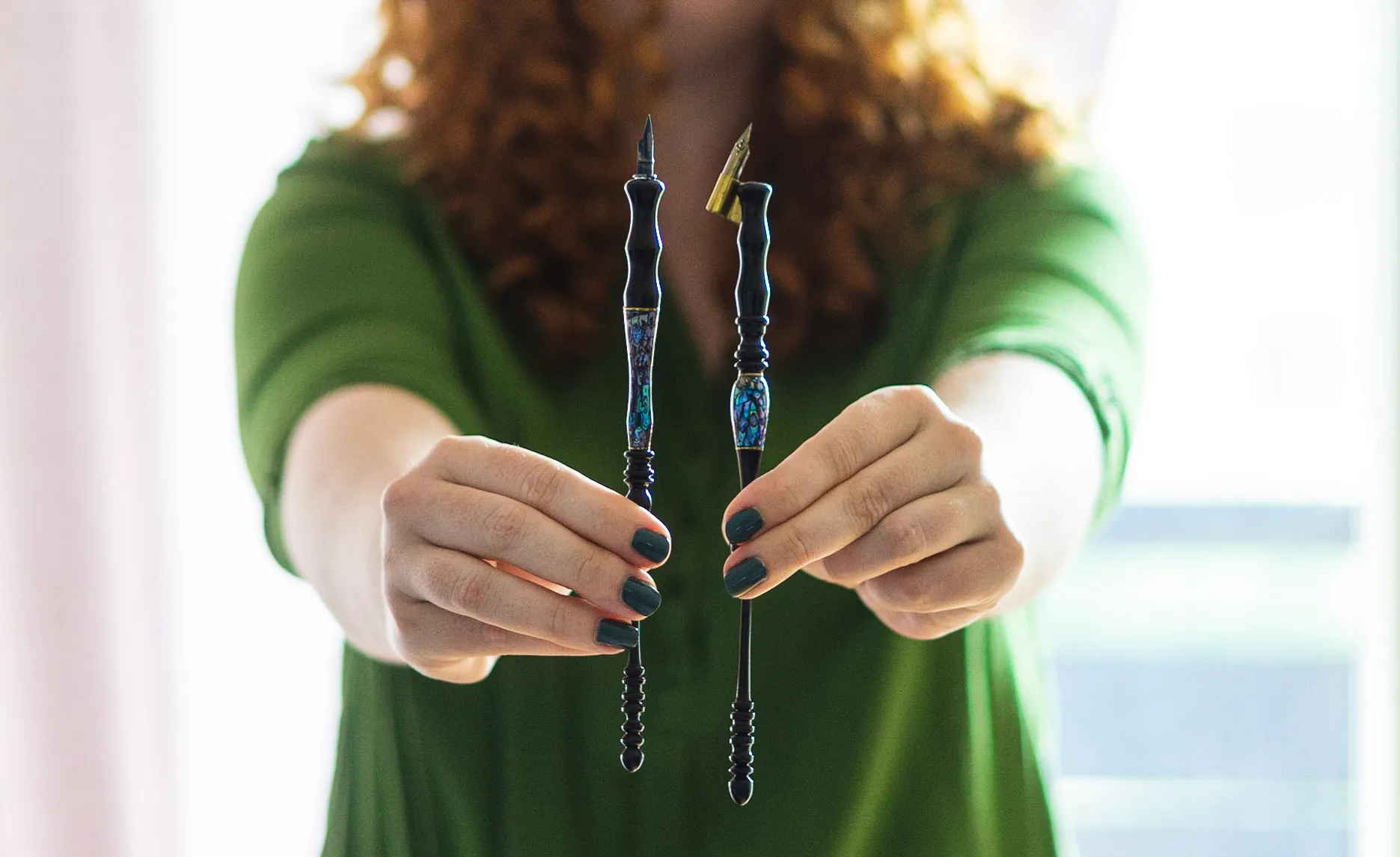It’s 6.45pm, 29th of December 2020 as I start typing up this blog post. I want to reflect and maybe criticize the way I approached this thing that has now morphed into not only yet another word-centric hobby of mine but a full-blown side-hustle that contributes to my income. And as the five-year anniversary of my journey with letters is just mere hours away, I want to dive a bit deeper. Talk about how I started and how I approached this thing I now call a passion of mine and as I take you along, share some of the things I wished I knew.
How it began
How it beganIt was shortly after Midnight. December 30th had only just begun, and the end of 2015 was looming on the horizon. I had been binge-watching YouTube and fallen into a rabbit hole – as the algorithm tends to usually rope me into its deepest depths of niche hobbies late in the evening – and staring with fascination at the incredible works of Seb Lester with a Parallel Pen as I stumbled upon a different video. It was said video, that I now consider the spark that started all of this. And to be honest, I shouldn’t be surprised. I accuse late night YouTube fallingintorabitholesing to be the birthplace of quite a few of my hobbies. Not like I needed any new bullet points on the ever-growing list of free-time activities. But back in 2015 I was still a student, blessed with a really bad caffeine addiction, consequent insomnia and a heaping amount of free time spent while everyone else was sleeping to tend to the newest spawns of seemingly bottomless boredom.
So there I was, sometime after midnight watching this woman paint letters with a brush. And even though I had always been somewhat creative I was never the stand-out when it came to art. And the last time I was graded for handwriting it had been insufficient. But somehow Teela made it look – doable. And even though I probably didn’t remember at the time, I later remembered a day when I was trying to draw and didn’t know what and my grandmother suggested a monogram. And I might’ve been obsessed with those for a day or two. So I guess I had a history with letters? But what was it, that truly lured me in? What was the major appeal to dive into this strange hobby for a Tech-Person like me with terrible handwriting who loved to type?
It’s was probably the appeal of making words look like art. Because words was my thing. It had always been my thing. And it is still my thing. I’ve been writing fictional stories ever since I was twelve years old which means that not only has writing been my longest-running passion, it also means I’ve been a writer for 54% of my life and that means something, right? And somehow it always comes back to words. I’ve said it before. Words is my thing. And everything I love somehow ties back into this passion for words. Be it my job coding, describing a website with words, or with calligraphy, making words look like pieces of art. And so that’s how it began. I watched that video. Dove into lettering and lettering and lettering. Started an Instagram in January and went about my business as I felt was perfectly fine.
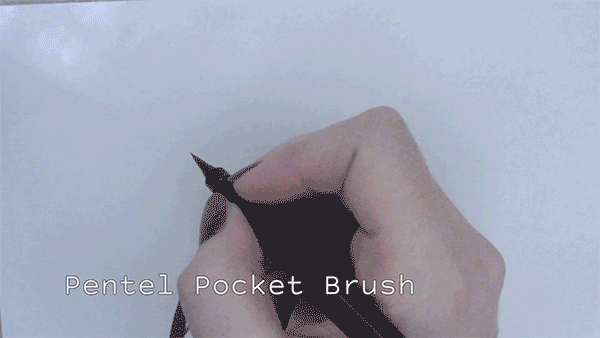
But – and it’s a big BUT.
I. Did. It. All. Wrong.
Wrong
WrongWhen I first realized my mistakes I wrote this multi-page essay on it in my first ever instructional workbook. And I always talk about the fact that I was learning Calligraphy wrong when people ask how I started. And I’ve been criticized for that. Mostly by Art-People who believe that art can never be wrong, especially not if you’re doing it as a hobby. Some of this might be true. But it never felt true for me. Here’s a thing you might not have gathered (how could you miss it though?) I’m a bit of an obsessive nerd. And when it comes to my hobbies (and everything, basically) I am a very goal-driven person who likes to be good at the things I sought out to be passionate about. So, something I never quite understood about myself looking back is how I could approach Lettering so differently than everything I otherwise approached.
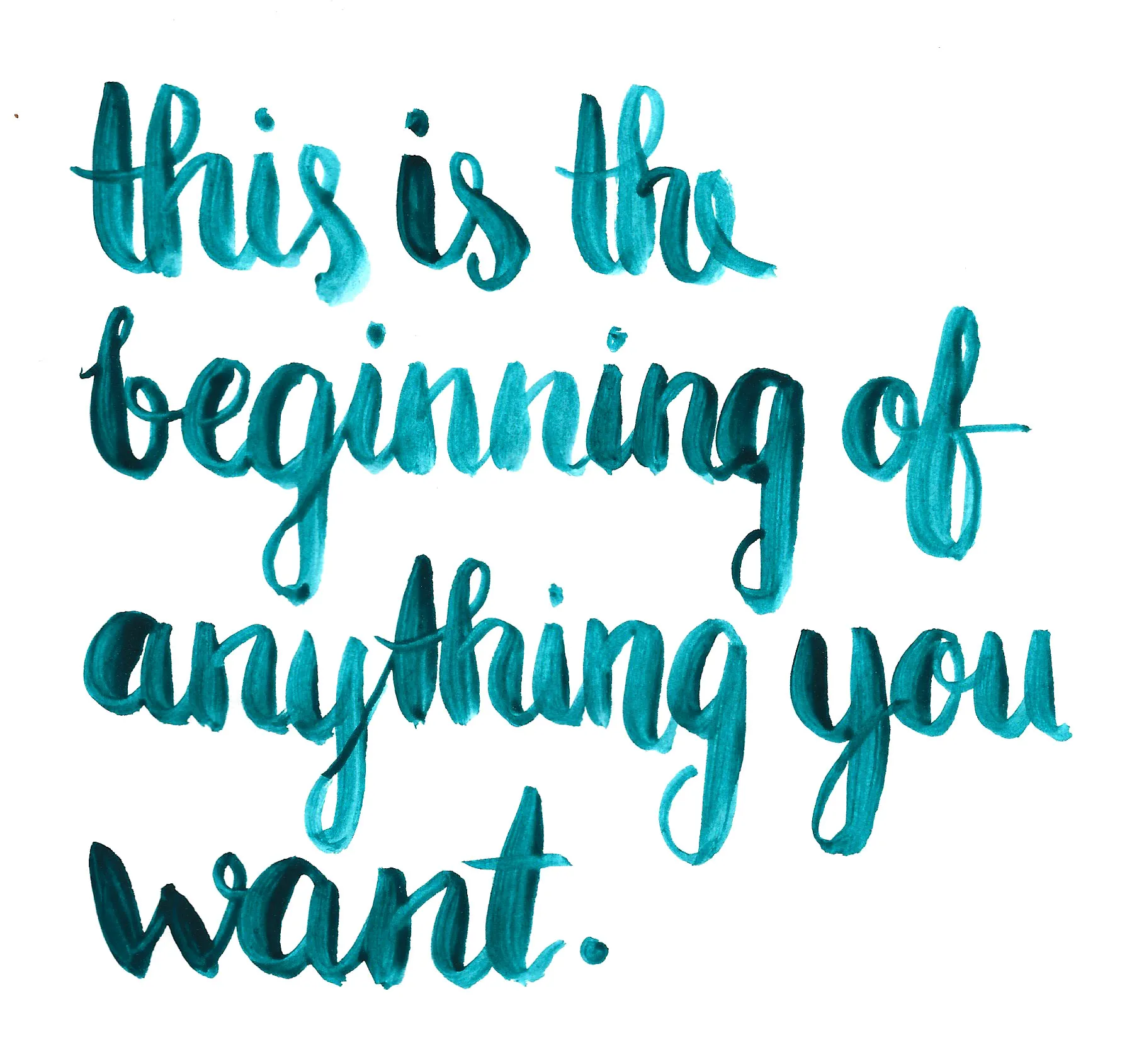
Five years ago, I was a Uni-Drop-Out who had restarted a different education but I knew how to research and google thanks to those classes – and said caffeine-induced insomnia that gave me lots of time with google. Basically, I’m really good at research and google and fallingintorabitholesing and was back then too. But I was doing it in all the wrong places.
See, the first day of my lettering journey, that 30th of December 2015, I immediately went out to embark on buying materials the next morning. Because that previous night, as I writing with a cheap nail art brush and my trusty Caran d’Ache Gouache paints, had somehow felt magical.
Usually, me and my hobbies do a lot of prep work, we go on a lot of google dates, getting to know each other, feeling out if we are truly meant to be, before getting the goods. But it was so different with lettering. It was sudden and chaotic and there was this urge to just dive the fuck in with not a single care of the process that was usually in place. Sounds almost romantic, right? But like any fling you throw yourself in too fast, there was a moment where I had to face reality. Stop. Reevaluate if the fling was to become a real thing.
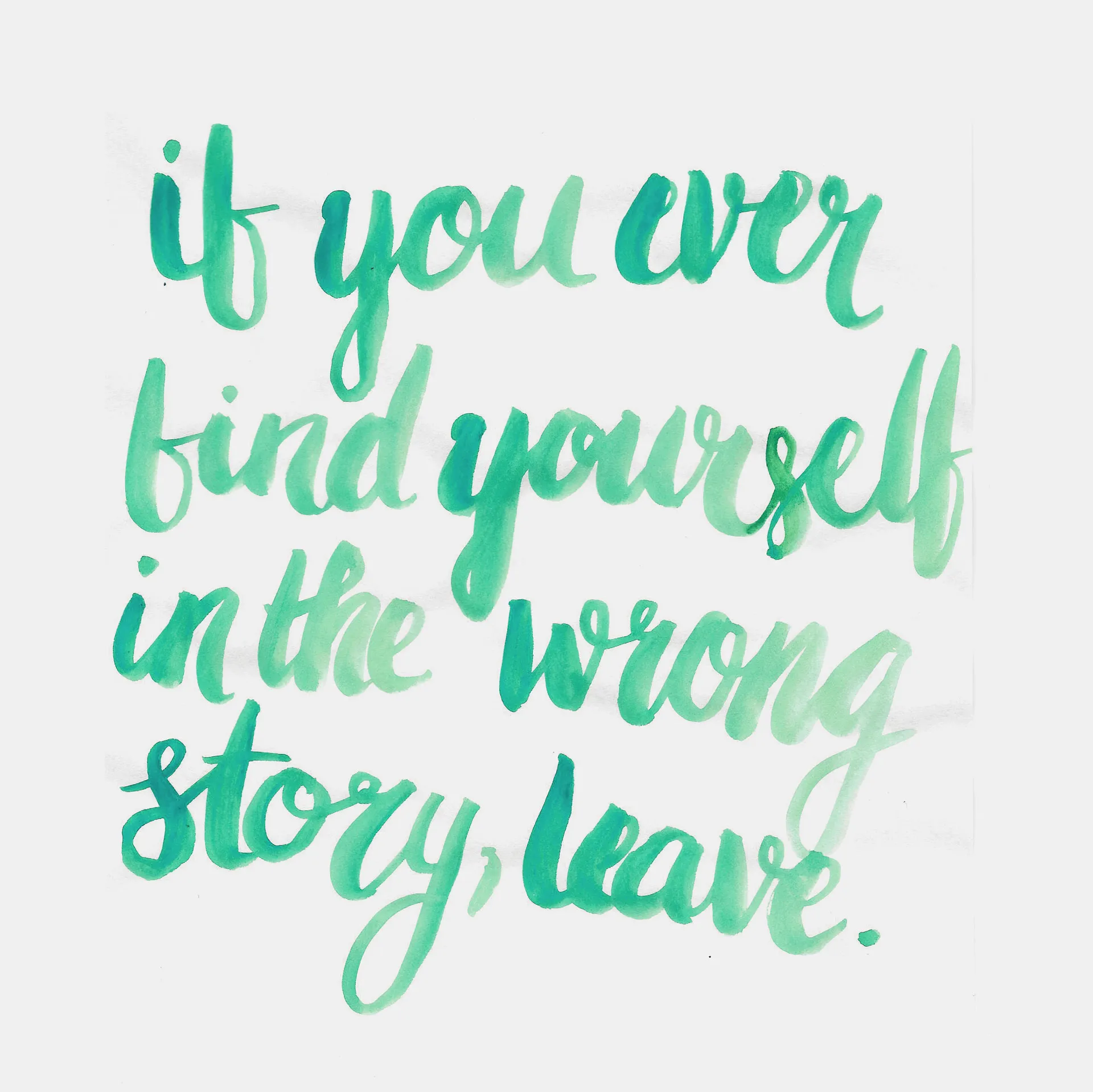
The first Year
The first YearOkay, so what exactly was it that I did so wrong, you ask? Let me quote myself in my very first Brush Lettering Blog Post, where I gave an account of the first month.
“how I approach[ed] learning this thing maybe a little differently than most of the tutorial videos taught.”
Imagine me sighing very heavily right now. I wish I could say I was twenty-one and feeling rebellious. Maybe I did. It’s been five years, I made some strange choices that year, like following my own stupid advice at the end of that blog post, which I am now going to quote. But let me put a really big fat DO NOT LISTEN TO WHAT I AM SAYING before that.
**“This is something I have taken from these tutorials. Don’t follow it all. A lot of people said that you should practice brushlettering by practicing the different strokes. I really do not like to do stuff out of context, so whenever I tried something like this I really did not enjoy it and I feel like that’s really not the point of it.”
“Also practice normal handwriting. I think it really does make a difference to also pick up just a ballpoint pen and try and write a little bit nicer than you’d do otherwise. I am definitely not someone that has a pretty (or even legible) handwriting, but I try to keep the things I do for brushlettering in mind.”**
This where I went wrong. I listened to pen recommendations. I listened to the basics people taught me, but somehow I went into a completely wrong direction.
There is one single sentence I whole-heartedly agree with in these quotes. “I really do not like to do stuff out of context”.
The Mistakes
The MistakesHere’s where I went wrong.
I didn’t feel like practicing strokes
I didn’t feel like practicing strokesI still hate practicing strokes. And yet, now that I do teach Calligraphy workshops, it’s the first thing we ink on a page. Because they are the fundamentals of a script. And yes, the strokes dictate the letter groups. And you will work your way up from easiest to hardest in my workshop. And even though it might not be as much fun as writing up pinterest quotes, people walking out of my workshops have written letters that look better than my letters looked after 10 months. And I was frustrated with the fact that my letters weren’t improving fast enough.
I thought Lettering was the same as Handwriting
I thought Lettering was the same as HandwritingLuckily, I learned this before my big A-ha moment. Handwriting is not Calligraphy. Practicing your handwriting will not necessarily improve handwriting.
My handwriting is the worst it has ever been.
I focused my research entirely on tools
I focused my research entirely on toolsBy the time six months was over I had stuffed my entire one-bedroom apartment with pens. I got every single brush pen I could. And once I got into pointed pens I got into a nib-rush. My collection grew and grew and grew and it is now filling an entire room in my apartment.
I still have a hoarding problem, but a really important point I want to make is that focusing all of your energy on a pen is wrong. It costs. A lot. And just because you have the newest Instagram trending pen doesn’t mean it will render you any better at lettering. It’s not the tools we use. Yes, a gorgeous handmade pen holder is a wonderful thing, but you can just as well create outstanding calligraphy with a pencil if you know your forms.
I completely ignored scripts
I completely ignored scriptsAfter I had changed my ways in Calligraphy I still sometimes wondered why my previous letters looked so bad. It took way longer than I sometimes care to admit to realize what was wrong. Let me explain with baking (because if my hobbies don’t fall into the words category they definitely are in the food category).
I feel like Baking is a lot like Calligraphy whereas Cooking is a lot like Drawing.
In Cooking, there are recipes you can follow but it is a lot easier to just throw ingredients and spices into a pan and make something incredible. It is very similar with drawing and painting. There are rules and the masters of traditional crafts that hone it over many years, but there is this entire freedom you can have with it too.
Baking, is bound by science. Baking needs to be more exact, if you get your ratios off, you might end up with something inedible. You can be so creative, but you’ll have to work within the parameters of science and be aware of the rules. It’s like Calligraphy and Lettering. Letters are bound by shapes. Go too far with an “a” and it might suddenly resemble a “q” or a “u” and the entire word falls apart because it becomes illegible.
When I was starting out, I felt like I could just take letters like cooking ingredients from different alphabets and throw them together, but they never harmonized, because I never quite looked at the entire thing as a whole.
Letters always exist in a context. In an alphabet. In a script. There are letters we can mix and match. Just like we can take a traditionally savory herb like Rosemary and put into sweet cake batter we can take an Ornamental Penmanship Capital and combine it with Copperplate. But only after we know how to make cake.
I didn’t review
I didn’t reviewI never looked back. After I finished a piece, I took a picture, posted it on Instagram and then continued. Sometimes I would letter for hours on end, creating quote after quote after quote and never taking a second to reflect.
I guess it was this sort of madness I was descending into, losing myself in letters. But if I would’ve taken a second to just – look. I would’ve learned so much.
Reviewing your own work is something that I might consider one of the most underrated secrets to quick improvement. Self-reflection, criticizing and getting to really really know the ideal shape you are trying to attain. If it’s traditional scripts you are into, studying masters. Don’t study peers, study the best of the best of the best and learn to tell the difference between good and incredible.
The Turning Point
The Turning PointSo how did it come about? This epiphany, the enlightenment that everything was all wrong? Well, my Deep-Dive into Traditional Pointed Pen Calligraphy only happened because I bought an iPad.
Sounds weird? Was very surreal.
Basically in the first couple months on Instagram I may not have made a lot of progress in my personal lettering, but I made a lot of digital friends. And I found a lot of inspiration. Amongst those was a traditional calligrapher of a back then still pretty small Instagram account. And even though I wasn’t really aware of the levels of good in calligraphy, even I could immediately tell that this man was incredible at his job. And I started following him and interacting some with his account.
At the same time, I was also falling in love with creating Procreate Brushes and was really trying to get everyone getting into this iPad lettering game to try out my brushes. Basically, I was trying to make this hobby pay for its expenses by selling brushes. And being a tech-nerd (I went completely rogue on my procreate research and read the entire handbook before doing any single thing in that app – see I completely forgot how to Myriam when I got into letters) really was an advantage. Back then the only other person doing brushes was Karin from ipadlettering (who’s also a Techy btw) but lucky for me, Karin wasn’t getting into pointed pen.
So then said Calligrapher who had this gorgeous Calligraphy also had a birthday and became a new iPad Pro owner. And it seemed like the stars aligned, because my comment on the post where he tried it for the first time was read. And I somehow ended up on his radar and also got comments on my calligraphy. Which absolutely made my day, because knowing now what an incredible mess he had seen, he was probably too kind with his feedback.
And then came that one comment in August.
It was the day I realized why that traditional Calligrapher with his magically gorgeous Copperplate had somehow always felt better than most other pointed pen people I had followed. Because I googled him. And it was also the day I sat in my room kind of in shock due to a very surreal moment, writing a message to my Mom. Because on that day I had decided I would be meeting this Calligrapher. In person. In London. I don’t remember exactly but I am pretty sure the message I sent my mother was along the lines of: “So, I’m gonna fly to London, to teach the Queen’s Calligrapher how to use his iPad and get a few pointers on my Calligraphy.”
Yeah. Myriam, who had no idea about Calligraphy was flying from Zürich to London to meet Mr. Paul Antonio.
And did that kickstart my research? I really wish it did. But it didn’t.
I flew to London in November. Meeting, one of the most knowledgeable calligraphers of our time, without doing a single minute of research…
Realizations
RealizationsNovember came, with it, the eleventh month of my calligraphy journey. I met Paul, his amazing husband Tim and the incredible back-then-apprentice Alice who worked in the studio. And after getting to enjoy Paul’s insanely good cooking (seriously, his cooking is just as much a symphony as his letters) and having lots of fun we got down to business.
In case you don’t know, Paul is known as a very very strict teacher and I immediately could tell that I had probably made a mistake coming unprepared.
But as we were sitting in the studio, Paul asked me to pick up a pen and show him what I could do. And I very vividly remember what he said. He said, “You really don’t know anything, do you?”
And then it hit me. The epiphany. I didn’t know anything. I knew – pens? But what was I doing? What was I trying to do? What did I want?
Even though I wanted to truly ponder over those questions, I didn’t really have time right then and there. Because work was waiting. Paul made me do lots of drills with a brush. And he shared so much wisdom with me just through the conversations we had throughout the day and it became very clear to me, that the way he was looking at a script was a lot more nerdy and scientific and quantifiable than any other calligrapher I admired at that time. He was approaching calligraphy a lot less like it was an art, where you are free to do as you please, and much more like a craft you have to learn.
I think we both realized we were in the presence of a fellow nerd, so I also felt a bit more comfortable to talk about my hobby of writing. And I basically told him that usually in November I was doing NaNoWriMo, which is writing a 50k word novel in a month. And it was only as I was talking about that, that I realized, this was going to be the first time in years that I would not be winning it. Because I had stopped writing, to go sit at my desk and do lettering.
And I think that was when I had this thought, that, yes, I didn’t know anything. But I didn’t want to know nothing. I wanted to know. And I wanted to get better. Because this thing, this weird kind of art but not-art had somehow made its way into my heart. And I didn’t want this to be just a fling. I realized me and Calligraphy would have to do a reset. Get to know each other, but for real this time.
Starting Calligraphy
Starting CalligraphyFor real this time. Once I got back from London I truly wanted to do this right. So, I decided that I would take the advice that Paul had given me and work on this. Because I just knew that this was the way I had to approach Calligraphy. Doing it the artsy-fartsy (sorry) way had not really given me the results I wanted.
So I read. I read a lot. I used a straight pen holder, mostly because I still felt like it was more comfortable than the obliques I had been using. But also because Paul had actually shown me how to properly hold it and use my whole arm to get bigger, more flowing lines, and I truly wanted to do it the proper way this time. I was also made aware of some risks that a wrong hold could impact on a writing hand, so I took this seriously.
I did a lot research on history and learned so much. Especially about the German-speaking part of the world that I was born into. I had been so mad that finding pointed pen supplies was so hard in Switzerland but I had no idea why, especially since people in England and Spain had a much much easier time. It was only after I dove into the history and learned that we had a completely different alphabet until it was forbidden in World War II. We briefly used pointed nibs but moved on from them, so most people’s memories are not of pointed nibs because they had been dismissed because they were deemed to hard to use for school children.
Once I started using my whole arm, I was slowly able to work my way into Flourishing. Once I realized how close I had to pay attention to letters I unlocked the secret to proper analysis. And I realized why people say it is so important to choose the materials you study wisely. Yes, finding inspiration with Instagram is amazing. But if you want to go into the world of traditional, you need to go into history and look at the people who made it into the books.
And this is where I am at, five years in. Still nowhere, because I widened my horizon to new goals. Aiming to become better, learn more in terms of scripts, history and proper execution of form. I still don’t consider myself fully fluent in any script, but I feel competent enough to teach introductions. And I now know what I don’t know.
But let’s talk about all of you looking for tips and not being fully happy with me right now. Because I went traditional on you, maybe?
“But I want to learn Modern Calligraphy”
“But I want to learn Modern Calligraphy”I’ve heard this a lot. I’ve considered teaching a modern calligraphy class instead of my Introduction to Pointed Pen which teaches a simplified Copperplate. When I first started out I thought I don’t want to do traditional I do modern. Modern means no rules. And that is wrong. And even modern Calligraphy (even though I know, some of you out there don’t believe me) follows rules. I’ve had this discussion with a couple modern calligraphers who said “I don’t follow all of those rules you teach.” But in the end, they all had to agree, once I pointed out all the rules their script wasn’t breaking. Modern Calligraphy, if done well, is always somehow rooted in a traditional context. You don’t have to study traditional scripts to be a good modern calligrapher. But, watching people evolve on Instagram in those five years, I’ve seen traditional calligraphers get so incredibly good within a couple months, while some modern calligraphers with equal practice time improved much slower. And I’ve been there myself. Watching back, seeing how quickly my script got better after I returned from London and started learning, I truly believe that if you want to take Calligraphy seriously and want to pursue it, studying a bit of traditional will never do you harm. Because once you got the fundamentals down, having fun rewriting rules instead of breaking them makes for a very pretty modern script.
For all you “But I just wanna have fun” people
For all you “But I just wanna have fun” peopleOkay, so if you are still here and have read all of that – thanks. Here’s a few words for those of you who just wanted to get a few tips on improving a hobby you don’t want to do a full deep dive and turn into a career. If you just want to do Calligraphy for fun, do it!
The only thing I truly recommend someone who just wants to write pretty letters once a year on a birthday card is please just make sure that you do enough research to not waste money on tools that don’t work. And learn how to properly hold your pen so you don’t ruin your hand (because a wrong pen grip can become a health concern).
Find people who look at letters like you. Find the right teacher for you. There’s so many different types of hobbyists and professionals and artists out there. There is the right kind of approach for the type of person you are.
I belong in the obsessive research nerd category and if I “just wanna have fun” I just kinda do a whole shitload of googling and fallingintorabitholesing until I somehow end up with a job and a side-hustle made up of what was originally just a hobby I was trying to just have fun with, so I’m either doing the fun thing wrong or too well?
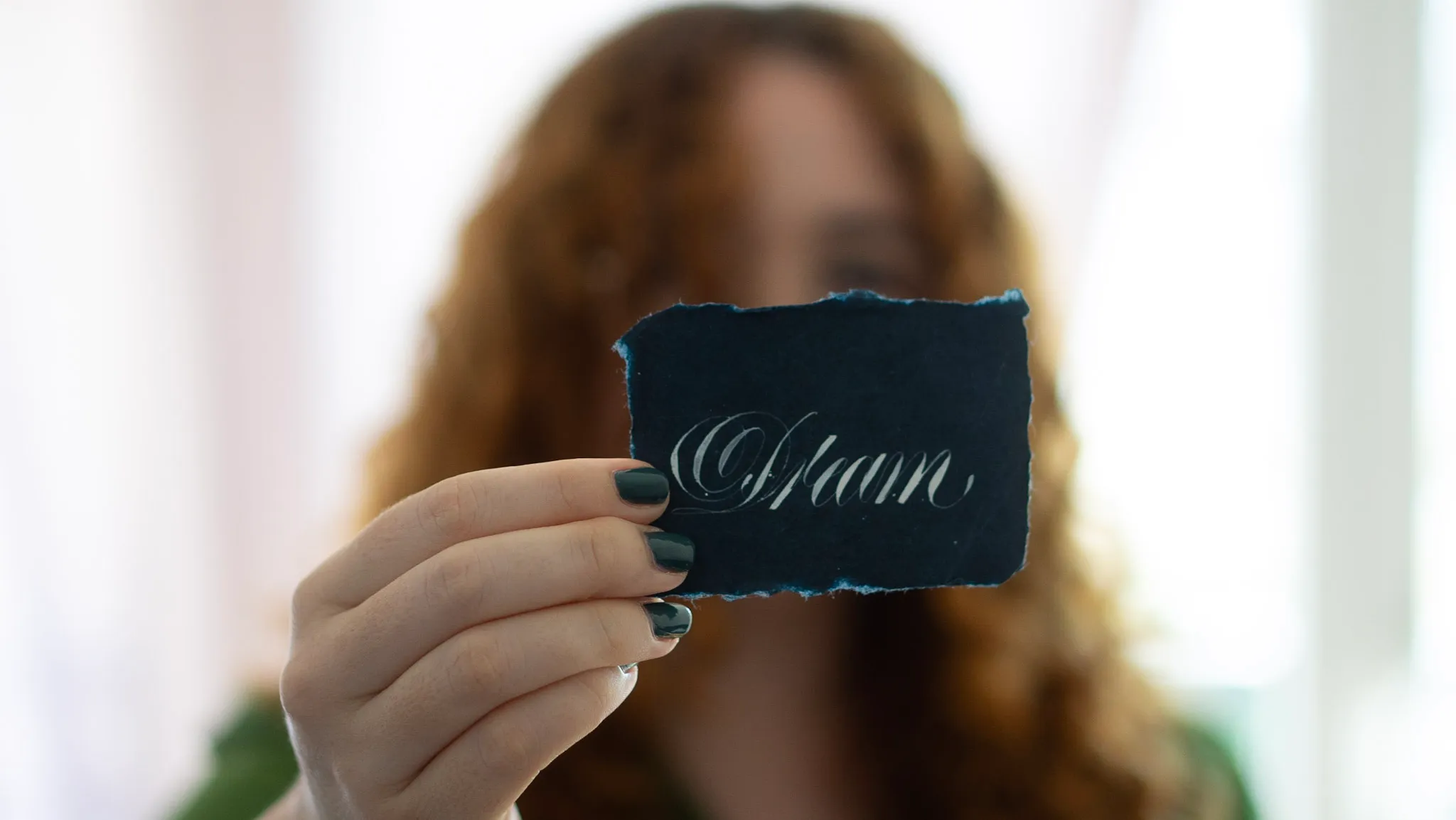
Final Words
Final WordsOkay, so somehow this has become a lot more storytelling of how I started and just a little bit of bits and pieces and a writing exercise of over 4k words. Thanks for reading it all. It’s now just past 10.00pm. December 29th 2020. And in a couple hours I will have been a Letterer for 5 years. Half a decade or 19% of my life and I have a final confession. I still haven’t ever practiced just basic strokes. But do I as I say, not as I do.
